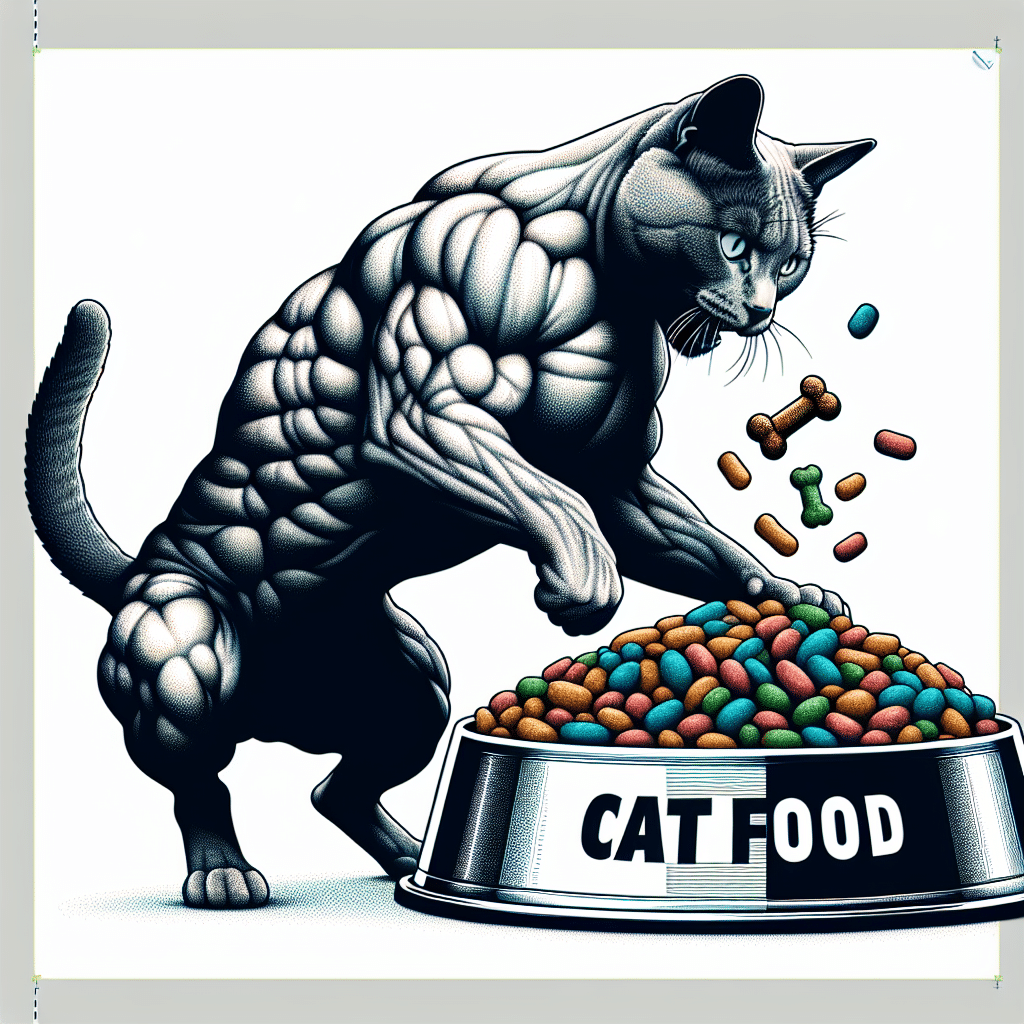Understanding High-Protein Cat Food for Active Cats
Why Protein is Essential for Active Cats
Active cats, especially those that engage in play or outdoor activities, require a balanced diet rich in protein. Proteins are essential for muscle development, energy production, and overall health. For active felines, a diet high in protein helps support their daily adventures and maintains optimal body function.
Nutritional Requirements of Active Cats
Cats are obligate carnivores, which means they require nutrients primarily derived from animal sources. An ideal diet for an active cat should include:
- High Protein Content: Look for food with 30% protein or more to support muscle maintenance and energy.
- Quality Protein Sources: Ingredients like chicken, turkey, fish, and lamb should be prioritized for optimal amino acids.
- Fat for Energy: Fats provide a concentrated energy source, beneficial for active cats. Look for foods with healthy fats, such as omega-3 and omega-6 fatty acids.
- Carbohydrate Balance: While cats need few carbohydrates, some can help provide energy. Select sources like peas and sweet potatoes that support digestive health.
Key Ingredients to Look for in High-Protein Cat Food
When selecting high-protein cat food for active cats, choose products that list high-quality protein sources among the first ingredients. Important ingredients include:
- Real Meat: Chicken, turkey, beef, or fish should be the primary ingredient.
- Meat Meals: Chicken meal or fish meal is concentrated forms of protein that can boost a food’s overall protein content.
- Eggs: An excellent source of complete protein and easily digestible.
- Animal By-Products: While often viewed with skepticism, high-quality by-products can be protein-rich and nutritious, providing essential vitamins and minerals.
- Vegetables: Ingredients like carrots and peas that provide fibers, vitamins, and minerals while supporting digestion.
Protein Quality vs. Quantity
Not all protein sources are created equal. The digestibility of protein is crucial; animal proteins, like chicken or fish, tend to have higher biological values than plant proteins. Look for foods that clearly define their protein sources and avoid those with vague ingredients such as “meat by-products.”
How Much Protein Do Active Cats Need?
The daily protein requirement can vary based on the cat’s age, health, and activity level. Generally, active adult cats should receive at least 30-40% of their diet from protein. A higher protein intake may be necessary for those engaged in strenuous activity, such as agile play or hunting-like behavior. As a general guide:
- Adult Active Cats: 30-40% protein
- Kittens or Young Cats: 35-50% protein for growth and energy
Popular High-Protein Cat Food Brands
Many brands cater specifically to high-protein diets for active cats. Consider the following:
- Hill’s Science Diet: Offers high-protein formulas tailored for energetic cats.
- Royal Canin: Provides targeted nutrition with options for higher protein levels.
- Purina Pro Plan: Features high-protein dry and wet options to match your cat’s activity levels.
- Instinct Raw: Focuses on raw, high-protein diets that replicate a cat’s natural diet.
- Orijen: Known for its high meat content and biologically appropriate formulas.
Wet vs. Dry Cat Food
Both wet and dry cat foods can be high in protein; however, they serve different purposes:
- Wet Food: Often contains higher protein levels and moisture, crucial for hydration. It’s beneficial for active cats, particularly during warmer months.
- Dry Food: Convenient and helps maintain dental health. It’s often higher in carbohydrates, but many brands are now focusing on high-protein recipes.
A combination of both can provide a balanced diet, offering the benefits of moisture and crunch for dental care.
Transitioning to High-Protein Cat Food
Switching your active cat to a high-protein diet should be done gradually to avoid digestive issues. Here’s a step-by-step method:
- Start Slowly: Start by mixing 25% new food with 75% of the current food.
- Monitor Reactions: Observe any gastrointestinal changes, indicating how well your cat is adjusting.
- Gradually Increase: Over a week, increase the new food to 50%, then 75%, and finally to 100% if no adverse reactions occur.
Common Misconceptions About High-Protein Diets
- High-Protein Leads to Obesity: The truth is, protein is necessary for maintaining healthy muscle mass, not fat. Pair protein with proper portion control and monitoring activity levels to prevent weight gain.
- All Cats Need the Same Protein: Each cat’s dietary needs depend on individual activity levels, age, and health. Tailoring nutrition to your cat’s lifestyle is essential.
- Carbohydrates are Bad: While high carbohydrate levels can be detrimental, a balanced amount can support energy levels for active cats.
Monitoring Your Cat’s Health
Regular vet visits are critical to track your cat’s weight, health, and dietary needs. A veterinarian can provide tailored advice on the best high-protein diet and any necessary adjustments based on physical activity and health concerns.
Additional Tips for Keeping Active Cats Healthy
- Regular Exercise: Engage your cat in interactive play sessions. Toys that mimic hunting behaviors can provide physical outlets for energy.
- Hydration: Ensure easy access to fresh water to prevent dehydration, particularly when consuming dry food.
- Routine Feeding Schedule: Maintaining a consistent feeding schedule helps regulate metabolism and energy levels.
Final Recommendations
Choosing the right high-protein cat food can significantly impact your active cat’s health and energy levels. Pay attention to protein sources, ingredient quality, and individual dietary needs. With the right nutrition, play, and care, you can keep your furry friend energetic and healthy for years to come.
